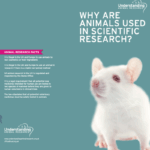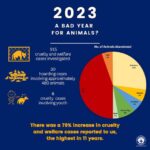Animal cruelty, a grave injustice that transcends borders, encompasses various acts that inflict harm, suffering, or death upon animals. The legal definitions and repercussions associated with animal cruelty vary significantly across different jurisdictions. This blog article delves into these varying legal frameworks, emphasizing how distinct cultures interpret and legislate the moral obligation towards animals.
To begin, it is imperative to understand the different categories of animal cruelty recognized globally. Generally, animal cruelty can be classified into two core types: active cruelty and passive cruelty. Active cruelty involves direct harm or abuse to animals, such as physical violence, neglecting to provide adequate food and shelter, or intentionally inflicting pain. Conversely, passive cruelty arises from a failure to act, where individuals or organizations neglect to ensure the welfare of animals under their care.
In the United States, animal cruelty laws vary by state, reflecting local cultural attitudes towards animals. Some states exhibit rigorous enforcement of anti-cruelty laws that encompass both domestic pets and farm animals, while others possess relatively lenient regulations. For instance, California’s animal cruelty statutes are particularly comprehensive, categorizing any act of cruelty as a felony, which includes beatings, abandonment, and torture. In stark contrast, states such as Idaho have minimal protections, primarily focusing on humane treatment rather than the active prevention of cruelty.
Moving to European nations, countries such as Germany and Switzerland implement laws that not only prohibit cruelty but also promote the welfare of animals. The German Animal Welfare Act exemplifies this progressive stance, mandating that animals must not suffer pain or injury and requiring owners to meet specific requirements for their animals’ care. Switzerland further elevates animal rights by encompassing aspects of animal dignity, introducing stringent measures against any form of exploitation.
In the United Kingdom, the Animal Welfare Act of 2006 sets a robust precedent for the protection of animals from unnecessary suffering. This legislation encompasses a wide range of animal types, including pets, livestock, and even wildlife. Welfare standards outlined in this act compel individuals responsible for animals to provide for their physical and mental needs. Nonetheless, enforcement can be inconsistent, and various loopholes exist that may undermine the efficacy of these protections.
Across Asia, the approach toward animal cruelty differs markedly. In India, the Prevention of Cruelty to Animals Act, enacted in 1960, represents one of the earliest forms of legislative action against animal abuse. Despite its age, the act remains limited in its scope and enforcement. Additionally, social and religious beliefs often intertwine with animal welfare issues; for instance, the reverence for cows within Hindu culture complicates discussions about agricultural practices involving these animals.
Japan’s legal structure concerning animal rights reflects a more modern viewpoint, with the Animal Welfare Act established in 2005. This law marked a pivotal shift in recognizing the emotional well-being of animals, mandating that pet owners provide proper care and exhibit humane treatment. However, the penalties for violations tend to be rather lenient, prompting calls for reform to impose harsher consequences for egregious acts of cruelty.
In some developing nations, the situation is significantly more dire. Legal frameworks often exist in name only, reflecting a lack of resources and enforcement capabilities. For instance, in parts of Africa, animal welfare issues are frequently overshadowed by human rights challenges, leaving animals vulnerable to acts of cruelty without the benefit of protective measures. In these regions, advocacy for animal rights often necessitates a grassroots approach, focusing on education and community engagement to promote humane treatment.
Moreover, cultural perceptions of animals significantly shape the legislative landscape. In cultures where animals are primarily viewed as property, any form of cruelty that doesn’t impact human interests may not be legislated against. In contrast, societies that regard animals as sentient beings often advance more rigorous legal protections. The distinction is stark in countries like Finland and Sweden, where animal welfare laws emphasize ethical treatment, reflecting a broader societal commitment to empathy towards all living beings.
Internationally, organizations such as the World Animal Protection and the World Health Organization advocate for the establishment of robust animal welfare laws to combat cruelty and promote ethical treatment. These organizations emphasize the interconnectedness of animal welfare with public health, environmental conservation, and social progress. Collaborative efforts amongst nations can lead to comprehensive frameworks that address the multifaceted nature of animal cruelty.
In conclusion, the definition of animal cruelty across various legal systems elucidates the profound discrepancies that exist in our global society. The degrees of protection afforded to animals are shaped by cultural norms, societal values, and the political will to enact and enforce laws. To eradicate animal cruelty, a concerted effort is essential: reforming laws, increasing public awareness, and fostering a compassionate ethos towards all creatures. The journey towards justice for animals is arduous, yet crucial, as every act of kindness and every legislative advancement bolsters our collective responsibility to protect those who cannot speak for themselves.








